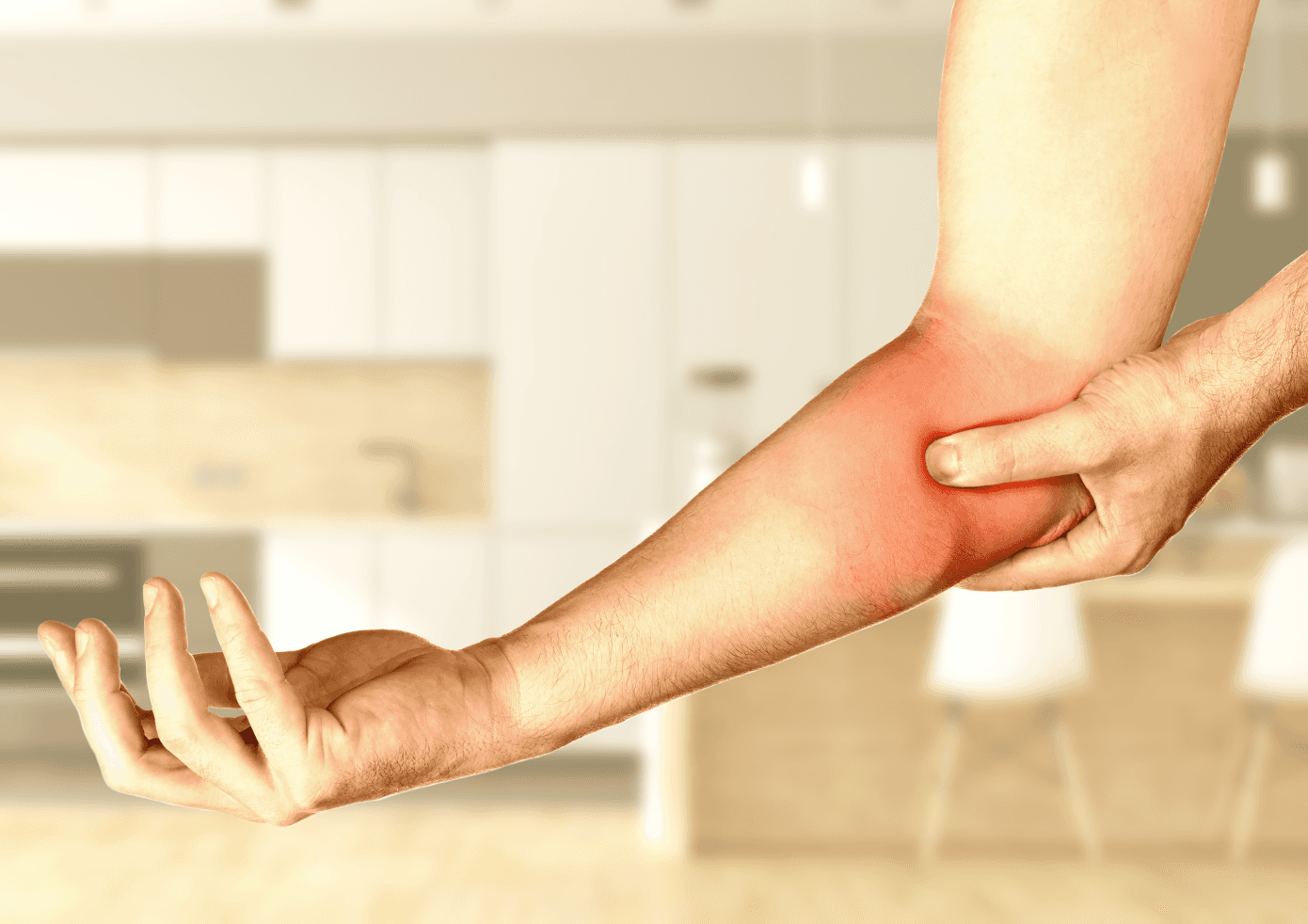Tennis Elbow Recovery
Understanding Elbow Pain: A Biomechanical Perspective
The elbow is a pivotal joint in the upper limb, enabling both gross and fine motor activities essential for daily life. From lifting and throwing to gripping and writing, the elbow serves as a vital link between the shoulder and hand. However, this role as a mechanical bridge often makes it vulnerable to dysfunction. By exploring the biomechanics of the elbow in the context of the body’s interconnected systems, we can uncover the root causes of elbow pain and address them effectively.
The Biomechanics of the Elbow
The elbow is a hinge joint formed by the humerus, radius, and ulna. It allows flexion, extension, and a degree of forearm rotation. These structures provide the stability and mobility needed for efficient force transfer between the upper and lower arm.
However, as part of a larger kinetic chain, the elbow’s mechanics are influenced by dysfunctions in other areas, such as the shoulder or wrist. The myofascial system plays a crucial role here, linking the elbow to more distant regions of the body. For instance, imbalances in the shoulder can alter the way forces are distributed through the elbow, increasing strain and the risk of injury.
This interconnectedness highlights a fundamental biomechanical principle: localized pain often reflects systemic dysfunction. Effective management of elbow pain requires understanding how the elbow interacts with the broader musculoskeletal system.
Tennis Elbow, Recurrent Injuries and Compensatory Patterns
Tennis elbow, and other similar injuries, arise due to strain and microtears in the muscles and tendons of the forearm. Repetitive motions like gripping or wrist extension overload these tissues, leading to inflammation and pain. This condition can disrupt the fine balance between muscle strength, tendon resilience, and joint mechanics, affecting overall arm function.
Recurrent elbow pain, such as is often seen tennis elbow or golfer’s elbow, often points to deeper underlying issues. These conditions often result from compensatory patterns elsewhere in the body. For example:
Shoulder instability or poor scapular control can alter arm mechanics, increasing stress on the elbow.
Weakness in the core or posterior oblique sling limits efficient force transfer, leaving the elbow to absorb more strain during activities like gripping or lifting.
Without addressing these systemic contributors, traditional symptom-focused treatments may provide only temporary relief, leaving the root causes unresolved.
Chiropractic Care for Elbow Pain
Function-based chiropractic care provides a comprehensive approach to managing elbow pain by addressing its root causes. Specific treatments to the elbow, shoulder, or wrist optimize joint alignment and motion, ensuring better integration with the surrounding structures.
Soft tissue techniques target imbalances in the forearm muscles, releasing tension in overworked extensors or flexors while activating stabilizing muscles. These therapies also promote healthier force transfer through the myofascial slings, reducing strain on the elbow.
A thorough assessment of the kinetic chain—spanning the wrist, shoulder, core, and even the feet—identifies the compensatory patterns that contribute to recurrent elbow pain. Addressing these interconnected dysfunctions helps resolve the root causes and prevents future injury.
Preventing Elbow Pain through Biomechanics
Long-term prevention of elbow pain involves strengthening the key functional units that support healthy arm mechanics. Exercises to balance the forearm flexors and extensors, such as wrist curls and reverse wrist curls, are essential. Strengthening the myofascial slings also enhance the elbow’s stability during dynamic activities.
Stretching tight forearm muscles and maintaining mobility in the shoulder and wrist further supports the elbow’s function. When combined with chiropractic care, these strategies create a resilient foundation, reducing the likelihood of recurrent injuries and improving overall performance.
Elbow related Conditions
Tennis Elbow (Lateral Epicondylitis).
Golfer's Elbow (Medial Epicondylitis).
Olecranon bursitis.
Pulled elbow. This is when a young child dislocates the radial bone from its ligamentous joint capsule.
Snapping tricep / snapping ulnar nerve. This is where the tricep tendon or the ulnar nerve snaps in and out of the ular groove.
Nerve Entrapments.

I have really had a good experience with Ed; over the years I have had various muscular skeletal disorders and I must say this is the best treatment I have received to date.

